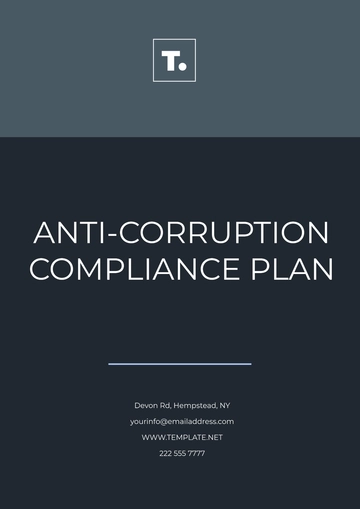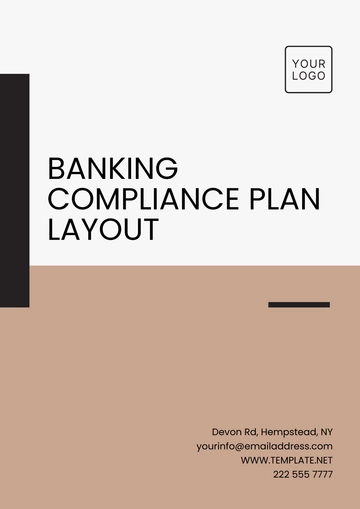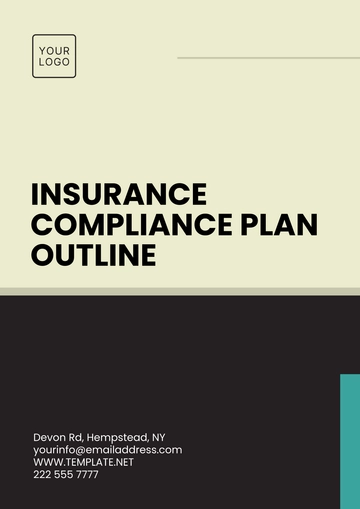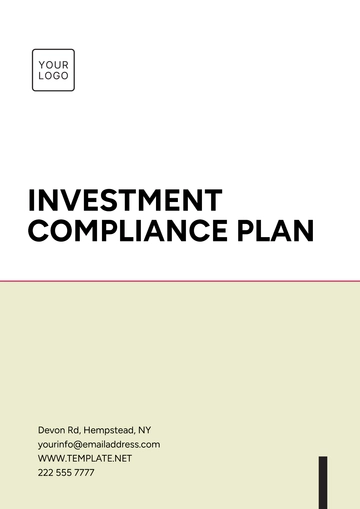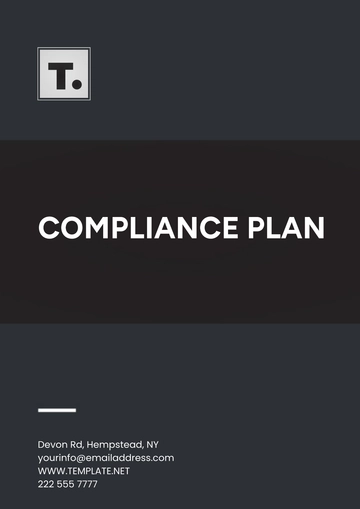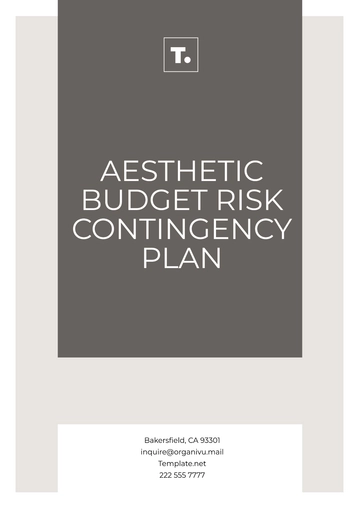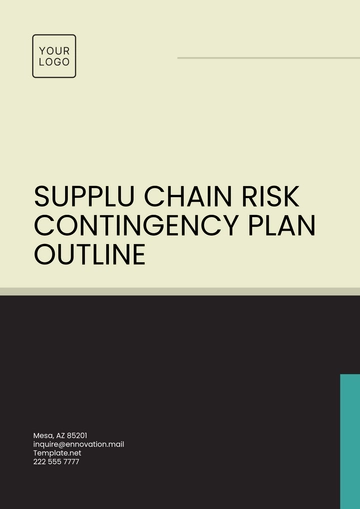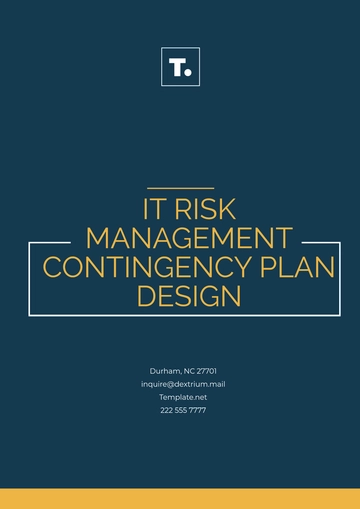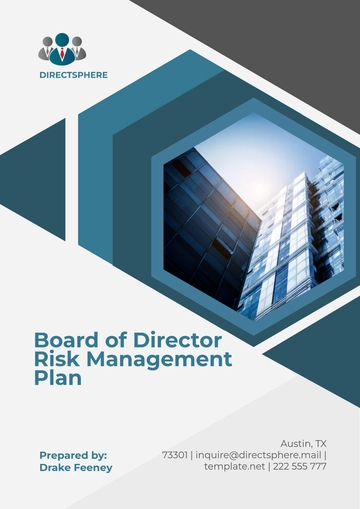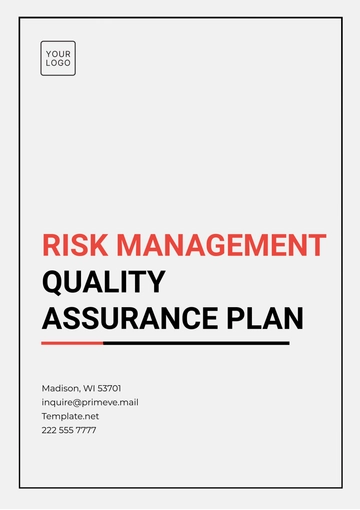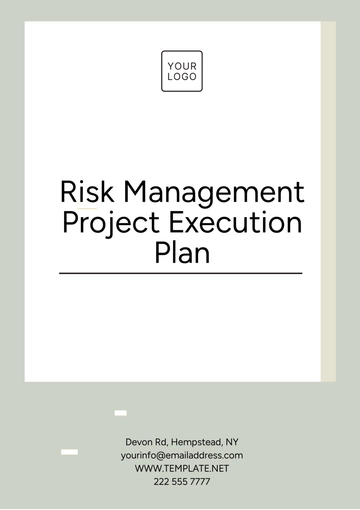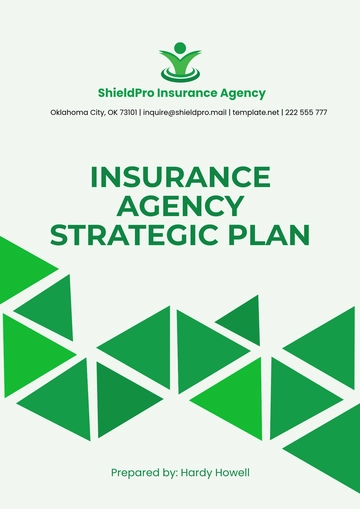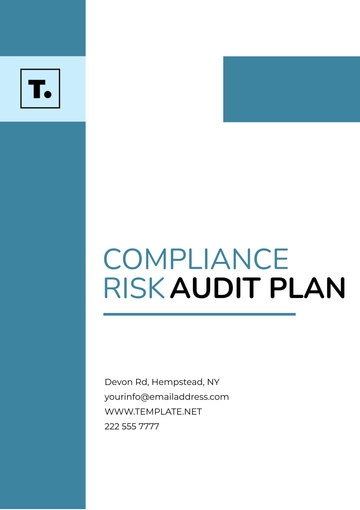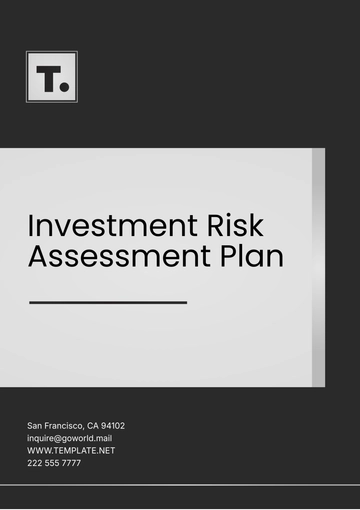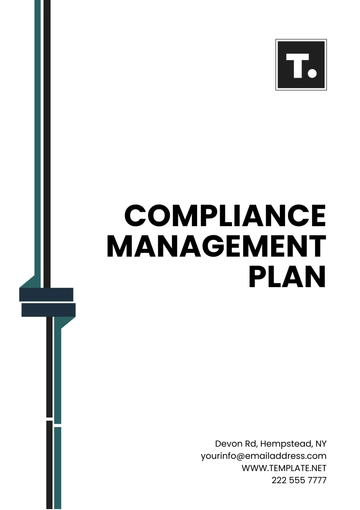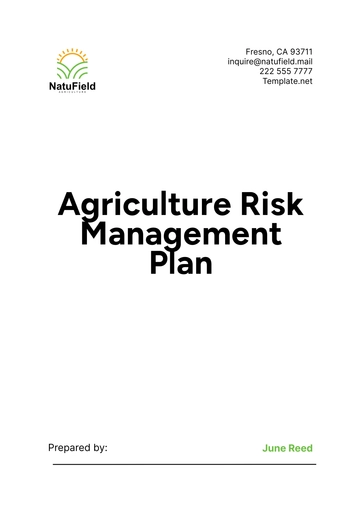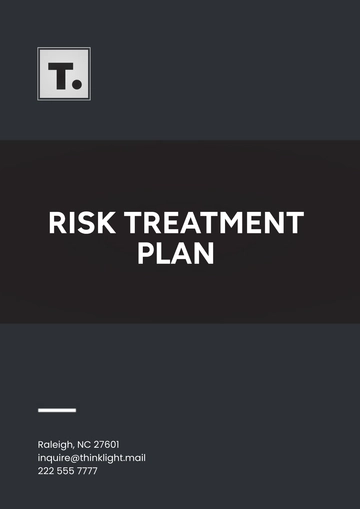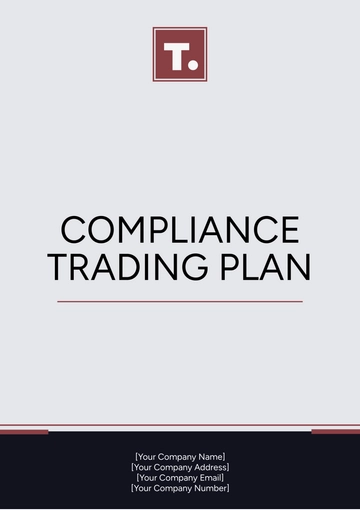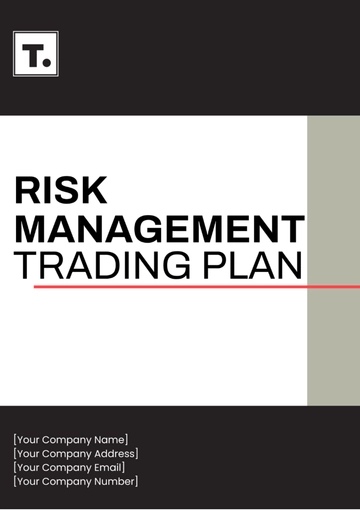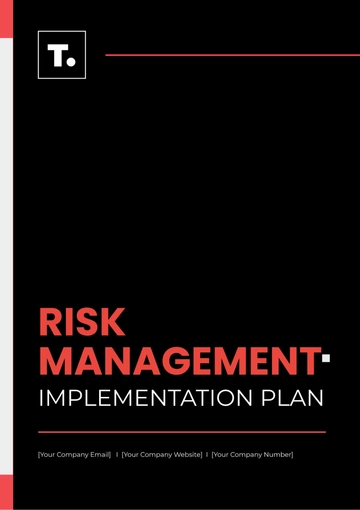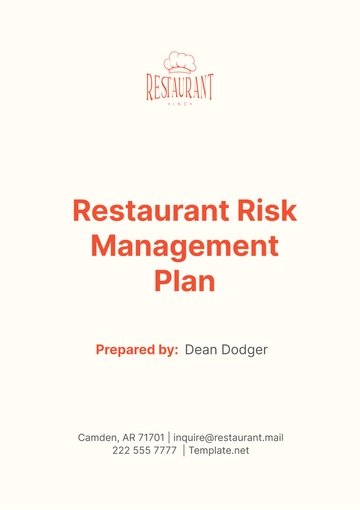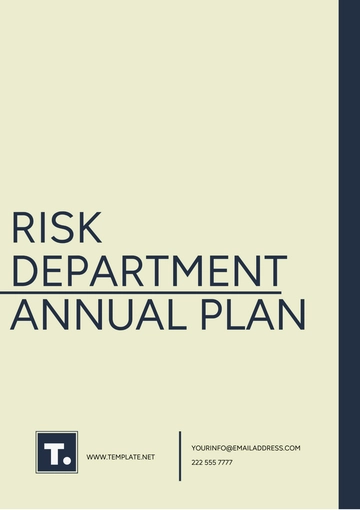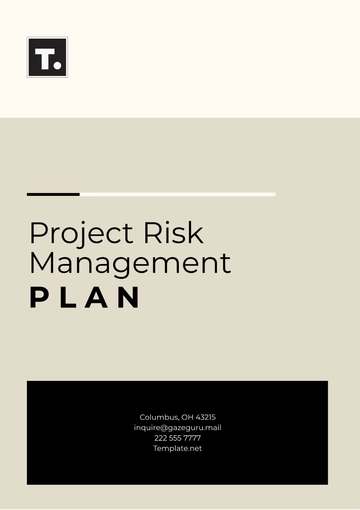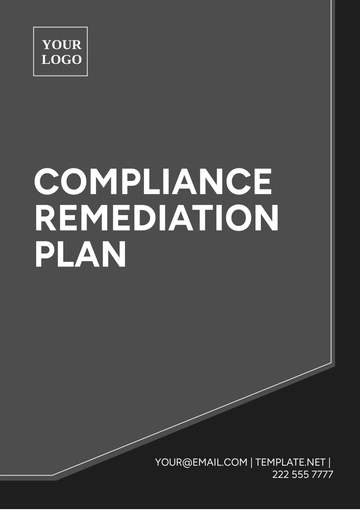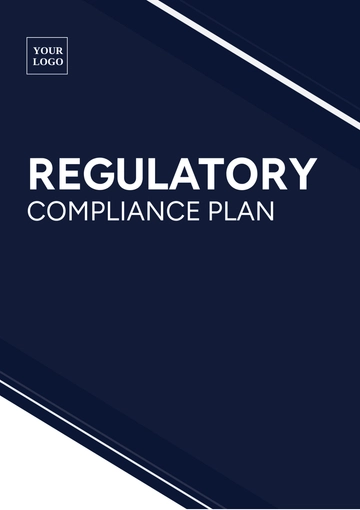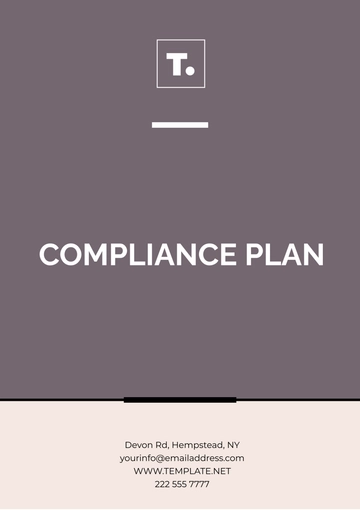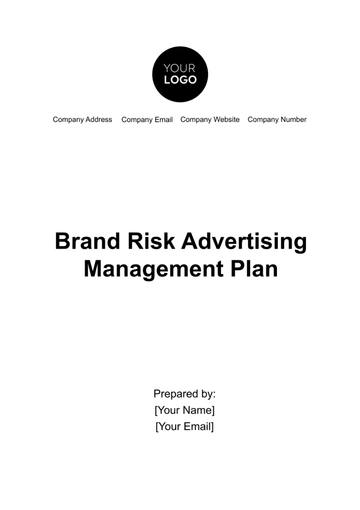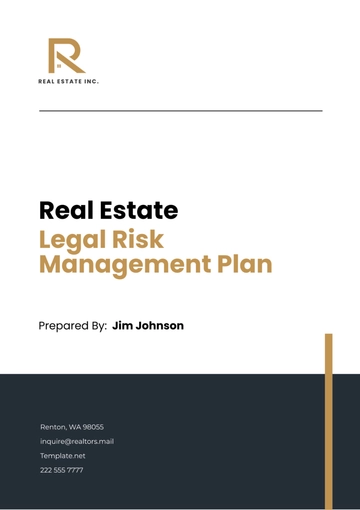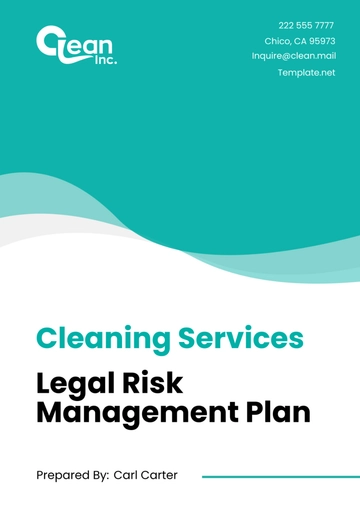Free Brand Risk Advertising Management Plan

1. Executive Summary
The Brand Risk Advertising Management Plan for [Your Company Name] is a strategically developed blueprint designed to navigate the complexities and potential pitfalls in the world of advertising. Given the volatile nature of market trends, consumer sentiments, and regulatory landscapes, this plan is an indispensable tool for safeguarding our brand's reputation and maintaining its integrity across all advertising channels. It lays out a systematic approach for anticipating, evaluating, and responding to various risks that could impact our brand's public image and advertising effectiveness.
Our plan recognizes that in today's fast-paced digital era, where information spreads rapidly, even minor advertising missteps can escalate into significant brand crises. Therefore, this document not only focuses on preemptive risk identification and assessment but also provides robust strategies for risk mitigation. These strategies are tailored to address specific risks associated with digital, traditional, and social media advertising, acknowledging the unique challenges and opportunities each channel presents.
Furthermore, the plan emphasizes the importance of continuous monitoring and agile response mechanisms. It outlines procedures for regular risk analysis and swift action in the face of emerging threats, ensuring that our brand can adapt to changing scenarios while maintaining a positive public perception.
The plan serves as a critical safeguard for [Your Company Name], enabling us to conduct our advertising activities with confidence and foresight. By proactively managing potential risks, we aim to foster a resilient and enduring brand image, one that resonates positively with our audience and stands strong against the challenges of the modern advertising landscape.
2. Risk Identification
Risk Identification is crucial for preemptively recognizing potential challenges that may impact our advertising initiatives. Identifying these risks early is the first step in protecting our brand and ensuring the smooth execution of our advertising strategies. In this chapter, we focus on three primary areas of risk: Market Changes, Legal and Compliance Issues, and Technological Failures.
Market Changes. Market dynamics are constantly evolving, and shifts in consumer preferences, trends, and behaviors can significantly impact the effectiveness of our advertising campaigns. The risk here lies in the potential misalignment between our advertising content and the current market sentiment or trends. For example, a campaign that was highly relevant a few months ago might become outdated or even inappropriate due to sudden changes in the market or societal norms. To mitigate this, we must stay abreast of market trends and be ready to adapt our strategies accordingly.
Legal and Compliance Issues. Advertising is heavily regulated, and legal and compliance risks are a constant concern. These include potential violations of advertising standards, copyright infringements, and non-compliance with industry-specific regulations. The consequences of legal non-compliance can be severe, ranging from financial penalties to damaging the brand's reputation. Our plan includes regular legal reviews of all advertising content and close monitoring of regulatory changes to ensure ongoing compliance.
Technological Failures. In the digital age, much of our advertising relies on technology. Therefore, technological failures represent a significant risk. This can include everything from website outages and social media platform disruptions to failures in digital ad delivery systems. Such issues can hinder the reach and effectiveness of our digital advertising efforts. To manage this risk, we implement robust IT support systems, ensure regular maintenance and updates of our digital tools, and have contingency plans in place for rapid response to technological failures.
By identifying and understanding these risks, [Your Company Name] can take proactive measures to mitigate them. This not only protects our brand but also ensures that our advertising campaigns are effective, relevant, and compliant with all necessary regulations and societal expectations.
3. Risk Assessment
Risk Assessment plays a critical role in quantifying and prioritizing the risks identified in the previous chapter. This section provides a structured approach to evaluating the likelihood and impact of each identified risk, enabling us to understand the extent to which these risks could affect our advertising campaigns and overall brand reputation. By assessing these risks, we can allocate resources and attention appropriately to mitigate them effectively.
This risk assessment is crucial for developing a strategic response plan. It helps us not only in identifying which risks need immediate attention but also in understanding the potential consequences of each risk. This assessment is based on current market data, historical insights, and predictive analysis to ensure a comprehensive evaluation.
This table outlines the key risk factors along with their likelihood of occurrence and potential impact on our advertising efforts.
Risk Factor | Likelihood | Impact | Description |
Market Changes | High | Medium | Fluctuations in consumer preferences and trends that could significantly affect the relevance and effectiveness of our advertising campaigns. |
Legal Issues | Medium | High | The possibility of encountering legal challenges such as violations of advertising regulations, copyright issues, and other legal constraints related to advertising content. |
Technological Failures | Low | High | Risks associated with technological disruptions or failures that could impact digital advertising platforms, leading to potential loss of reach and engagement. |
This risk assessment framework allows [Your Company Name] to prepare for and respond to challenges in a systematic and informed manner. By understanding the likelihood and potential impact of each risk, we can prioritize our risk management efforts, ensuring that our brand remains protected and our advertising campaigns continue to be effective and compliant.
4. Mitigation Strategies
This chapter focuses on proactive measures to address the risks identified in our assessment. This section outlines specific strategies tailored to mitigate risks associated with different types of media - Digital, Traditional, and Social. The effectiveness of our advertising campaigns hinges not just on the creative content but also on our ability to foresee and manage potential risks. By implementing these mitigation strategies, we aim to minimize the impact of these risks on our brand and advertising efforts.
The strategies we outline here are designed to be practical and actionable, ensuring that [Your Company Name] can quickly and efficiently respond to any issues that may arise.
Here’s a detailed table summarizing the mitigation strategies for each type of media risk:
Risk Category | Strategy | Description |
Digital Media Risks | Regular updates to digital platforms | Ensuring all digital platforms are updated regularly to avoid technical glitches and to keep up with the latest trends and security standards. |
Compliance checks for online content | Conducting regular reviews of online content to ensure compliance with legal standards and advertising regulations. | |
Traditional Media Risks | Legal review of print and broadcast ads | Implementing a rigorous legal vetting process for all print and broadcast advertisements to prevent legal issues and ensure compliance. |
Diversification of media channels | Reducing risk exposure by diversifying across multiple traditional media channels, thus not overly relying on a single medium. | |
Social Media Risks | Active monitoring of social media trends | Continuously monitoring social media trends to stay ahead of potential risks and adapt our strategies in real-time. |
Crisis communication plan for negative feedback | Developing a comprehensive crisis communication plan to address negative feedback or PR incidents swiftly and effectively. |
Through these targeted mitigation strategies, [Your Company Name] aims to create a robust framework for managing risks across all advertising mediums. This proactive approach not only safeguards our brand but also ensures the continuity and success of our advertising campaigns in the face of potential challenges.
5. Monitoring and Reporting
The "Monitoring and Reporting" chapter is a critical aspect of the Brand Risk Advertising Management Plan for [Your Company Name]. This section emphasizes the ongoing processes of observing, analyzing, and communicating potential risks throughout the duration of our advertising campaigns. Effective monitoring and reporting are key to ensuring that any emerging risks are identified early and managed proactively, thus minimizing their impact on the brand.
Regular Review Meetings. One of the fundamental components of effective risk management is holding regular review meetings. These meetings serve as a platform for various teams involved in the advertising process to come together and discuss the status of ongoing campaigns, identify any new risks, and evaluate the effectiveness of current mitigation strategies. These sessions are scheduled on a weekly or bi-weekly basis and are crucial for maintaining an up-to-date understanding of the risk landscape.
During these meetings, teams will review data from various monitoring tools, discuss feedback from stakeholders, and assess the overall performance of the advertising campaigns. This collaborative approach ensures that risk management is a continuous process and integrates different perspectives and expertise.
Reporting System for Potential Risks. Another vital element is the establishment of a robust reporting system for potential risks. This system includes protocols for identifying and documenting risks, along with channels for escalating and communicating these risks to relevant stakeholders.
The reporting system is designed to be accessible and efficient, allowing team members to quickly report any issues they observe. This could range from noting shifts in consumer sentiment on social media to flagging legal concerns with new advertising content. Each report is then evaluated by a risk management team, which determines the appropriate response and action plan.
The monitoring and reporting mechanisms in place at [Your Company Name] are integral to maintaining the agility and responsiveness of our advertising efforts. By regularly reviewing our campaigns and having a solid system for reporting risks, we can ensure that our brand stays protected and our advertising strategies remain effective and on target.
6. Emergency Response Plan
The "Emergency Response Plan" chapter is a vital element of the Brand Risk Advertising Management Plan for [Your Company Name]. It outlines a structured and prompt approach for responding to critical situations that could potentially harm the brand's reputation or disrupt advertising operations. In an environment where even small incidents can quickly escalate into major crises, having a well-defined emergency response plan is crucial for rapid and effective intervention.
Steps for Immediate Action in Case of a Crisis
The emergency plan details the specific steps to be taken immediately following the identification of a crisis situation. This protocol is structured to ensure swift action, aiming to mitigate the impact of the crisis. The steps include:
Initial Assessment: Quick evaluation of the situation to understand the scope and potential impact of the crisis.
Activation of Crisis Team: Mobilizing a dedicated crisis management team that is prepared to handle various emergency scenarios.
Communication Channels: Establishing clear lines of communication internally within the organization and externally with stakeholders, media, and the public.
Containment Measures: Implementing immediate actions to contain the crisis, such as pausing ongoing advertising campaigns or issuing preliminary statements.
Ongoing Monitoring: Continuously monitoring the situation for new developments and adjusting the response strategy accordingly.
Contact Details for Crisis Management Team
The plan provides comprehensive contact details for the crisis management team, including primary and secondary contacts. This ensures that team members can be reached quickly and without confusion in the event of an emergency. The contact list includes:
Crisis Team Lead: [Name, Contact Information]
Public Relations Officer: [Name, Contact Information]
Legal Advisor: [Name, Contact Information]
IT and Digital Media Specialist: [Name, Contact Information]
Human Resources Representative: [Name, Contact Information]
Having this information readily available ensures that the right people can be brought together quickly to respond effectively to any crisis.
By having these structured steps and clear contact details, [Your Company Name] is prepared to handle unexpected emergencies in a way that minimizes damage to the brand and maintains public trust. This emergency response plan is an essential part of our overall risk management strategy, ensuring readiness and resilience in the face of potential crises.
7. Budget for Risk Management
This chapter is a crucial section of the Brand Risk Advertising Management Plan for [Your Company Name]. It outlines the financial allocation necessary for implementing effective risk management strategies within our advertising campaigns. This budget is meticulously planned to ensure that sufficient resources are dedicated to identifying, monitoring, and mitigating potential risks, thereby safeguarding our brand's reputation and the success of our advertising efforts. Allocating a specific budget for risk management underlines the commitment of [Your Company Name] to proactively address and manage potential adversities that could arise during our advertising campaigns. This financial planning is essential for the smooth operation of risk management activities and for ensuring quick and efficient responses to any emergent issues.
Item | Estimated Cost | Description |
Monitoring Tools | $X,000 | Software for tracking brand sentiment and risks. |
Legal Consultation | $X,000 | Regular legal reviews of advertising content. |
Crisis Management | $X,000 | Funds reserved for emergency response actions. |
8. Review and Update Plan
Recognizing that the advertising landscape is continuously evolving, this section underscores the importance of regularly reviewing and updating our risk management strategies.
Bi-annual Review of the Risk Management Plan. Our approach includes a structured bi-annual review of the entire risk management plan. This review process is designed to assess the effectiveness of current risk mitigation strategies and to identify any new risks that may have emerged. The bi-annual timeline ensures that the plan remains relevant and effective in the context of the dynamic advertising environment. During these reviews, we will evaluate the outcomes of our mitigation efforts, discuss any incidents that occurred, and analyze how they were managed.
Updates Based on New Market Trends and Technologies. Another key aspect of this plan is updating our strategies in response to new market trends and emerging technologies. The advertising industry is subject to rapid changes, be it in consumer behavior, media consumption patterns, or technological advancements. By staying attuned to these changes and updating our plan accordingly, we ensure that our risk management approach is proactive and forward-thinking. This may involve integrating new monitoring tools, adapting to changes in legal regulations, or revising our crisis management protocols to align with the latest best practices.
The ongoing review and updating of the risk management plan are critical to maintaining the resilience and relevance of [Your Company Name]'s advertising strategies. This continuous improvement process is pivotal in protecting our brand against the ever-changing risks in the advertising landscape.
9. Appendix and References
Appendix A: Crisis Communication Templates
Appendix B: Contact List for Crisis Team
References: Industry Standards, Legal Guidelines
Contact Information:
Name: [Your Name]
Email: [Your Personal Email]
Phone: [Your User Phone]
This document is confidential and intended for the use of [Your Company Name] only.
- 100% Customizable, free editor
- Access 1 Million+ Templates, photo’s & graphics
- Download or share as a template
- Click and replace photos, graphics, text, backgrounds
- Resize, crop, AI write & more
- Access advanced editor
Introducing the Brand Risk Advertising Management Plan Template from Template.net! Crafted for efficiency, this editable and customizable tool empowers businesses to mitigate advertising risks seamlessly. Harness the power of our intuitive Ai Editor Tool to tailor strategies and safeguard brand integrity. Elevate your advertising game with precision and ease.
You may also like
- Finance Plan
- Construction Plan
- Sales Plan
- Development Plan
- Career Plan
- Budget Plan
- HR Plan
- Education Plan
- Transition Plan
- Work Plan
- Training Plan
- Communication Plan
- Operation Plan
- Health And Safety Plan
- Strategy Plan
- Professional Development Plan
- Advertising Plan
- Risk Management Plan
- Restaurant Plan
- School Plan
- Nursing Home Patient Care Plan
- Nursing Care Plan
- Plan Event
- Startup Plan
- Social Media Plan
- Staffing Plan
- Annual Plan
- Content Plan
- Payment Plan
- Implementation Plan
- Hotel Plan
- Workout Plan
- Accounting Plan
- Campaign Plan
- Essay Plan
- 30 60 90 Day Plan
- Research Plan
- Recruitment Plan
- 90 Day Plan
- Quarterly Plan
- Emergency Plan
- 5 Year Plan
- Gym Plan
- Personal Plan
- IT and Software Plan
- Treatment Plan
- Real Estate Plan
- Law Firm Plan
- Healthcare Plan
- Improvement Plan
- Media Plan
- 5 Year Business Plan
- Learning Plan
- Marketing Campaign Plan
- Travel Agency Plan
- Cleaning Services Plan
- Interior Design Plan
- Performance Plan
- PR Plan
- Birth Plan
- Life Plan
- SEO Plan
- Disaster Recovery Plan
- Continuity Plan
- Launch Plan
- Legal Plan
- Behavior Plan
- Performance Improvement Plan
- Salon Plan
- Security Plan
- Security Management Plan
- Employee Development Plan
- Quality Plan
- Service Improvement Plan
- Growth Plan
- Incident Response Plan
- Basketball Plan
- Emergency Action Plan
- Product Launch Plan
- Spa Plan
- Employee Training Plan
- Data Analysis Plan
- Employee Action Plan
- Territory Plan
- Audit Plan
- Classroom Plan
- Activity Plan
- Parenting Plan
- Care Plan
- Project Execution Plan
- Exercise Plan
- Internship Plan
- Software Development Plan
- Continuous Improvement Plan
- Leave Plan
- 90 Day Sales Plan
- Advertising Agency Plan
- Employee Transition Plan
- Smart Action Plan
- Workplace Safety Plan
- Behavior Change Plan
- Contingency Plan
- Continuity of Operations Plan
- Health Plan
- Quality Control Plan
- Self Plan
- Sports Development Plan
- Change Management Plan
- Ecommerce Plan
- Personal Financial Plan
- Process Improvement Plan
- 30-60-90 Day Sales Plan
- Crisis Management Plan
- Engagement Plan
- Execution Plan
- Pandemic Plan
- Quality Assurance Plan
- Service Continuity Plan
- Agile Project Plan
- Fundraising Plan
- Job Transition Plan
- Asset Maintenance Plan
- Maintenance Plan
- Software Test Plan
- Staff Training and Development Plan
- 3 Year Plan
- Brand Activation Plan
- Release Plan
- Resource Plan
- Risk Mitigation Plan
- Teacher Plan
- 30 60 90 Day Plan for New Manager
- Food Safety Plan
- Food Truck Plan
- Hiring Plan
- Quality Management Plan
- Wellness Plan
- Behavior Intervention Plan
- Bonus Plan
- Investment Plan
- Maternity Leave Plan
- Pandemic Response Plan
- Succession Planning
- Coaching Plan
- Configuration Management Plan
- Remote Work Plan
- Self Care Plan
- Teaching Plan
- 100-Day Plan
- HACCP Plan
- Student Plan
- Sustainability Plan
- 30 60 90 Day Plan for Interview
- Access Plan
- Site Specific Safety Plan
